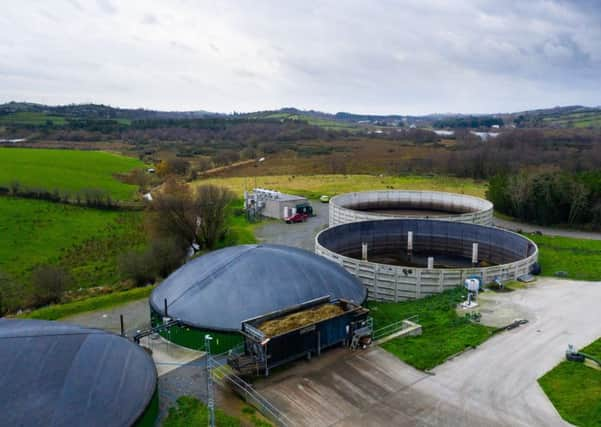AD – a growing success story in NI


At a very fundamental level the sector is helping to increase our energy security levels in a meaningful way while, at the same time, delivering this resource in ways that are totally compatible with the principles associated with environmental sustainability.
AD was specifically selected as a way of producing green electricity for Northern Ireland because of the technology’s ability to operate on a 24:7 basis. Contrast this with wind, which is an intermittent source both in terms of its availability and predictability. Adding to the good news, where AD is concerned, is the proven track record of operators to achieve plant efficiency levels of around 90% on a consistent basis.
Advertisement
Advertisement
These figures confirm that the technology is proven and reliable and will continue to play a key role in delivering a ‘green energy future’ for Northern Ireland.
But let’s get back to basics. Capital spend on AD in Northern Ireland is currently running at around £200m.
This figure will probably increase by another 25% given the number of new AD projects in the planning system.
Assuming that a realistic proportion of the AD plants currently in the development phase are brought through to full implementation, this means that 100 systems could be operating across Northern Ireland within the foreseeable future.
Advertisement
Advertisement
This is a more than significant resource, which will require ongoing maintenance and upkeep. I mentioned earlier the fact that AD plants in Northern Ireland are achieving exceptionally high efficiency ratings.
In part, this reflects the accompanying development of a support sector, which ensures that faults and repairs can be carried out within a very short time of them being reported.
All of this has entailed the creation of many new, high-skilled jobs in rural areas, none of which would never have been conceived had AD not been the success story it has turned out to be.
With in the order of 100 plants in operation this would equate to circa £30 million per annum of expenditure in the A.D. support sector. This is in addition to the feedstock costs which primarily provide income to the local farming and agricultural contracting community.
Advertisement
Advertisement
Where farming is concerned, AD is now recognised as a ‘force for good’ in helping to provide primary producers with new markets for their silage and the other crop inputs used to generate electricity. In total contrast to the milk, beef and lamb sectors, which are subject to the vagaries of world markets,
AD operators can plan the future of their businesses on the back of a realistic end return, which is fixed for years to come.
A typical farm-based AD plant will convert farm crops such as grass silage and will also convert existing farm by products such as cattle slurry and chicken litter into energy and the resultant digestate providing a more concentrated and available natural fertiliser with far less odour thus displacing the need for chemical fertilisers. This provides both a more environmentally friendly fertiliser but also provides a cost saving to farmers.
But this is only part of the story. Given the need for AD operators to operate within the existing farm-based regulatory framework an additional regulatory framework is also provided through the waste management licence. This means that all the slurry used in the generation process and the final digestate produced are fully regulated and traceable.
Advertisement
Advertisement
This is further enhancing the environmental standards being achieved on local farms. It’s hard not to conclude that AD is a growing force for good in rural communities throughout Northern Ireland.
The even better news is the fact that with predictable long term cash flows communities can plan around this and into the future.